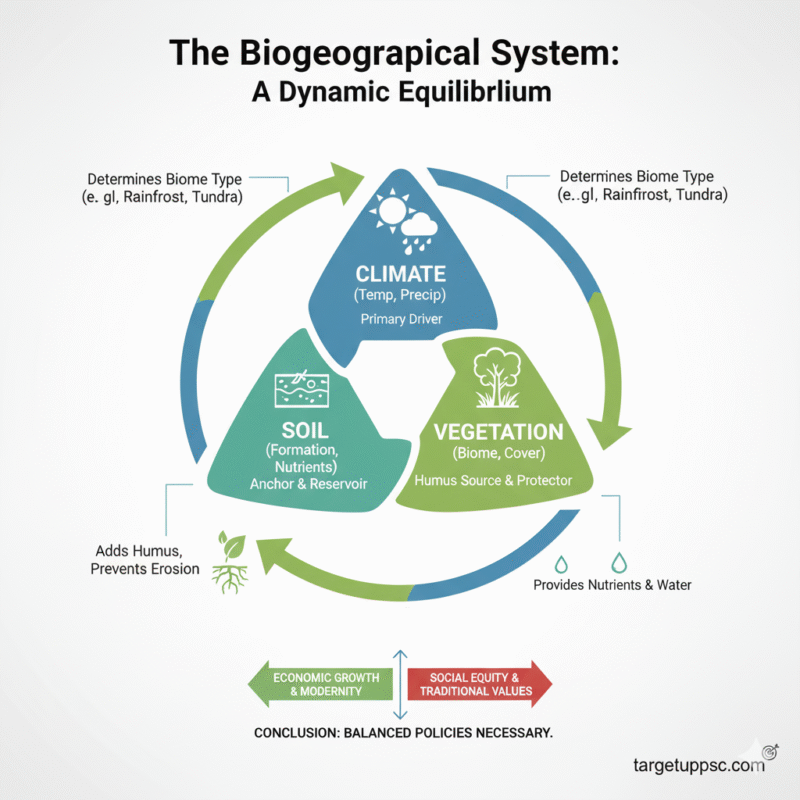2024 GS P1 Solution, PYQs Solution
Q.8. Explain the interrelationship between climate, soils and vegetation.
Climate, soils, and vegetation are fundamental, interconnected components of any terrestrial ecosystem. They exist in a state of dynamic equilibrium, where a change in one directly impacts the other two, forming a “biogeographical system.”
The interrelationships are as follows:
- Climate as the Primary Driver: Climate (specifically temperature and precipitation) is the main factor determining the type of vegetation (biome) and the nature of soil formation. For example, hot and wet climates lead to tropical rainforests and intensely leached, nutrient-poor laterite soils.
- Climate’s Impact on Soil: Climate governs the speed and type of soil formation (pedogenesis). High temperatures accelerate the decomposition of organic matter, while heavy rainfall leaches minerals. Conversely, low temperatures (tundra) slow decomposition, leading to peaty soils.
- Vegetation’s Role in Soil: Vegetation is the primary source of humus (organic matter) for soil.
- Deciduous forests and grasslands contribute high organic matter, creating deep, fertile soils (e.g., Mollisols).
- Coniferous forests drop acidic needles, leading to acidic, leached soils (e.g., Spodosols).
- Vegetation cover also prevents soil erosion from wind and water.
- Soil’s Influence on Vegetation: Soil acts as the anchor and nutrient/water reservoir for plants. Its fertility, texture (sandy, clay), and water-holding capacity determine which specific plant species can thrive in a given climate.
- The Feedback Loop: Vegetation and soils, in turn, influence the microclimate. Dense forests increase local humidity and cloud cover through transpiration (evapotranspiration) and modify the local albedo (reflectivity).
In conclusion, these three elements are inseparable. Any significant change, whether natural (climate shift) or human-induced (deforestation), will set off a chain reaction, altering the entire ecosystem’s character, stability, and productivity.


